Yacoob's Bench rejuvenated
Date posted: 12 October 2023
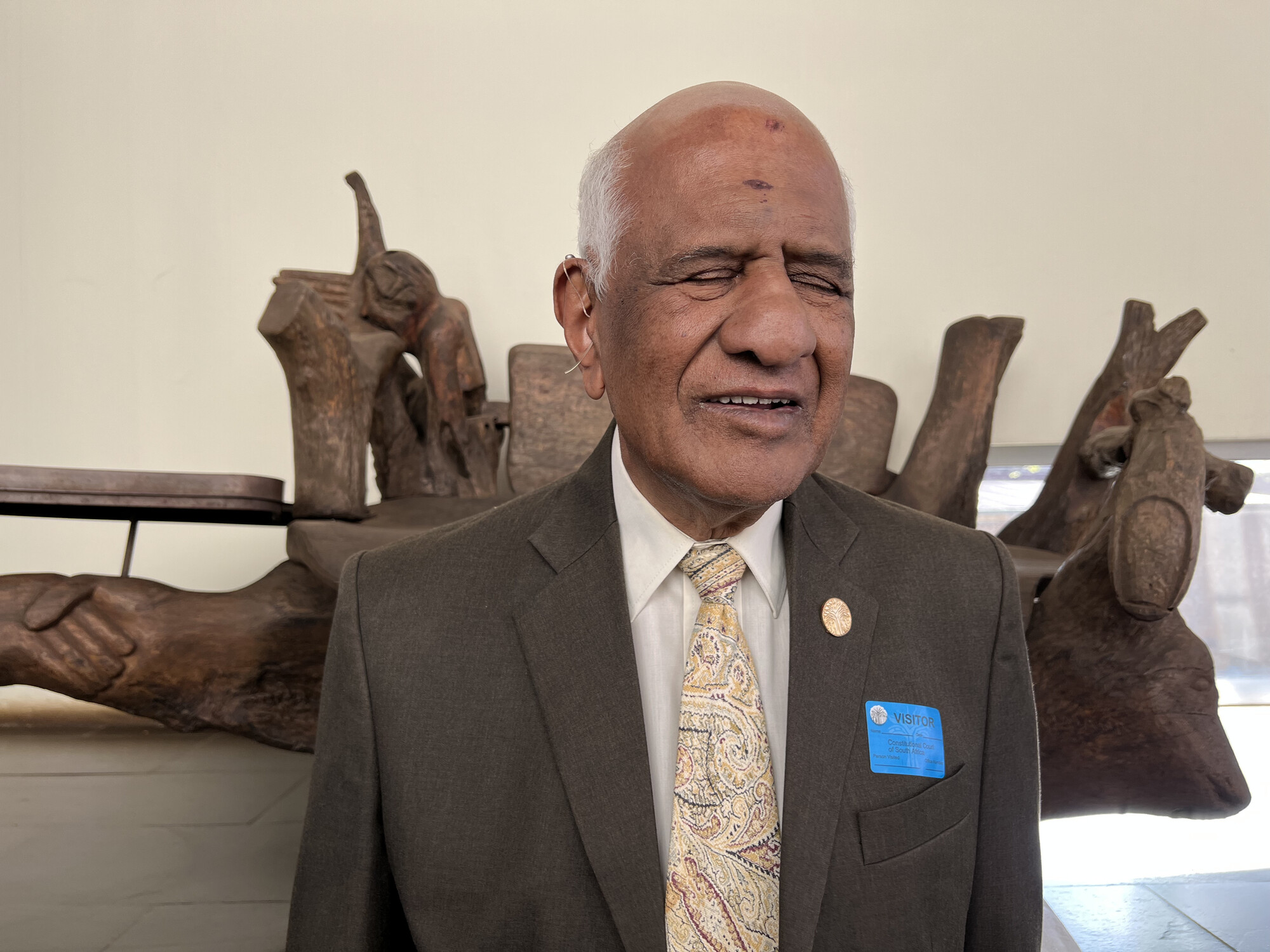
Justice Zak Yacoob photographed with Yacoob's Bench in the background.
The artist Azwifarwi Ragimana (1962- ) created the wooden sculpture Yacoob’s Bench (2004) as a way to pay homage and tribute to former Judge Zakeria ‘Zak’ Yacoob, a blind man who served on the Constitutional Court bench from 1998–2013. Justice Yacoob is an anti-apartheid activist born on 3 March 1948, he was appointed to the bench in 1998 by President Nelson Mandela, and he briefly served as Acting Deputy Chief Justice during the long-term leave of Justice Dikgang Moseneke.
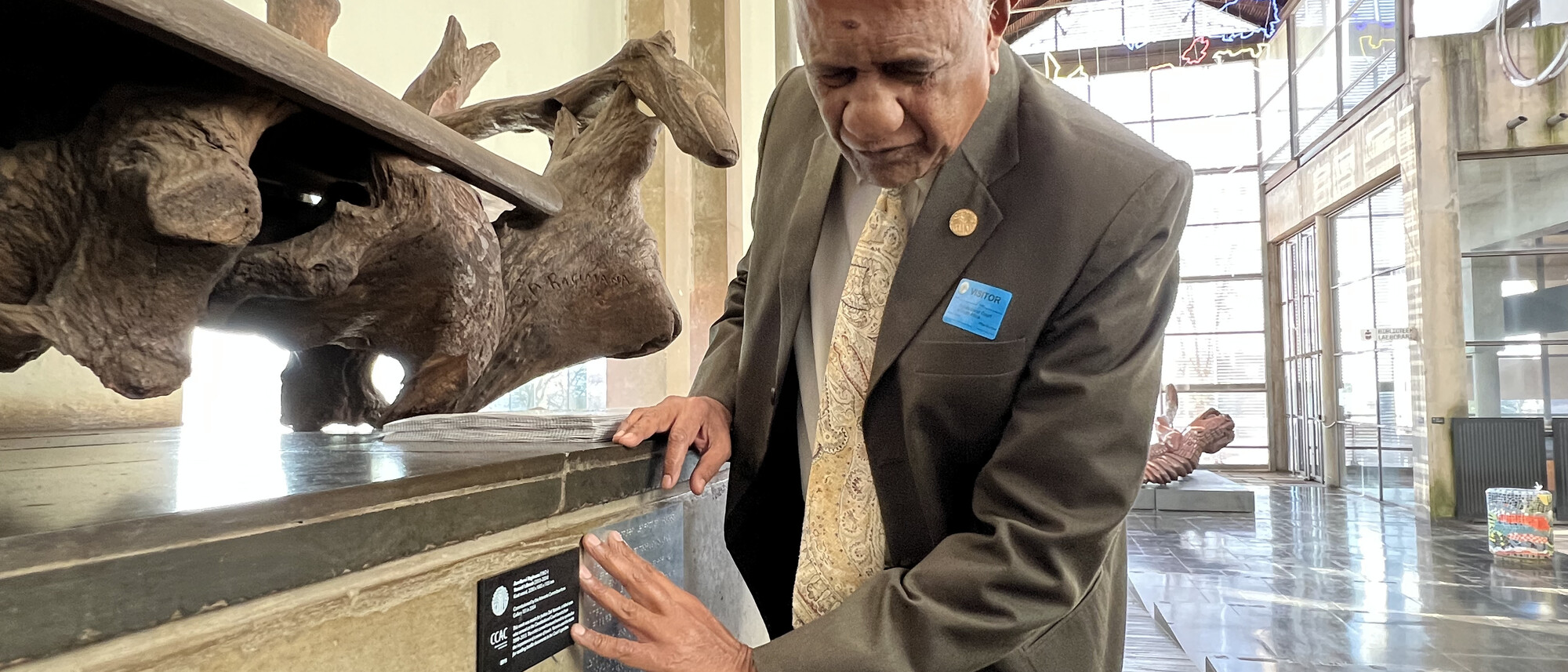
Photograph of Justice Zak Yacoob reading the braille signage card, specially made for the bench.
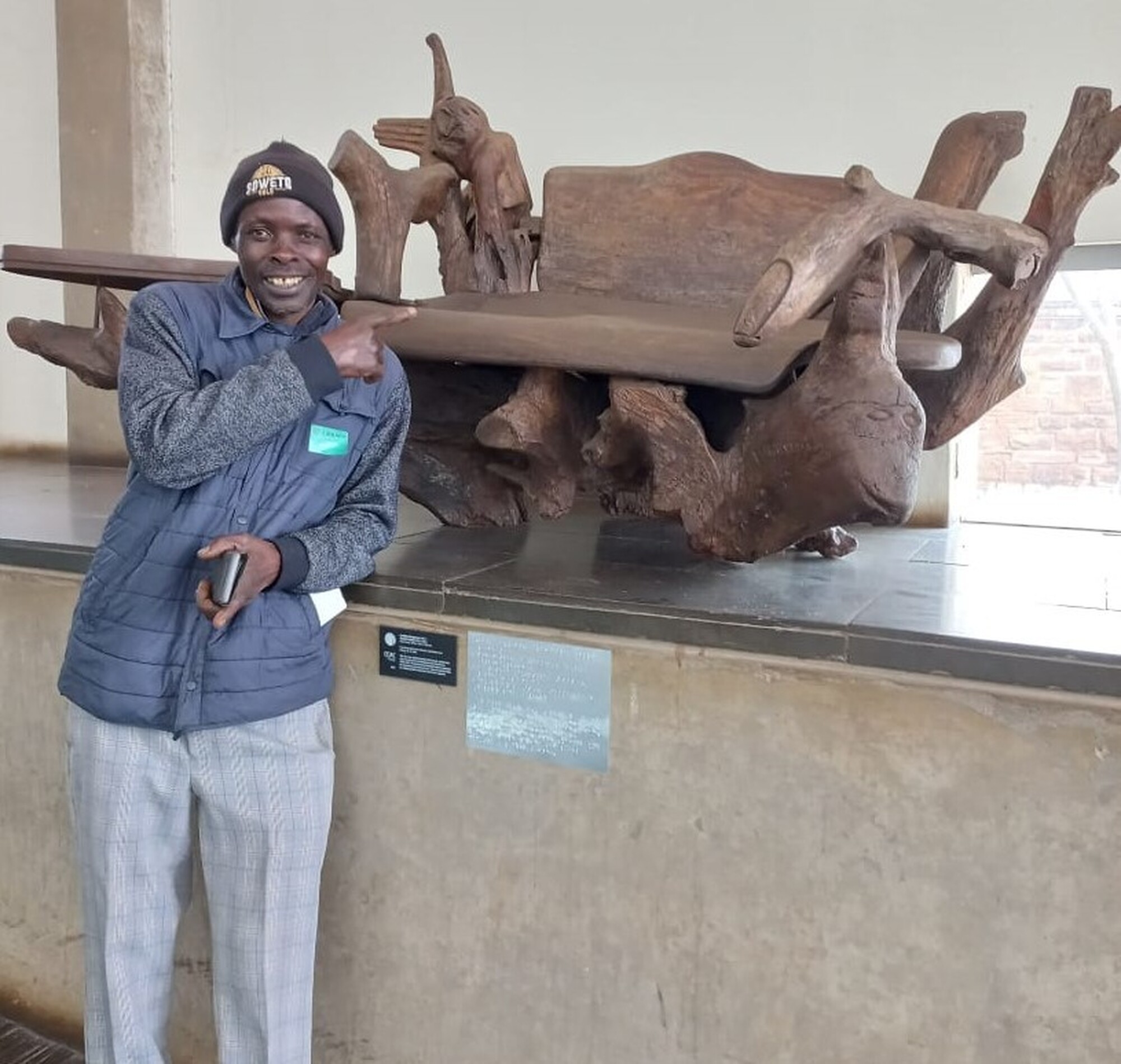
The artist, Azwifarwi Ragimana poses with the bench during the consultation meeting for the design and installation of the braille display box with the CCAC staff.
Ragimana grew up in the Tshandama village of Venda (Limpopo), and got introduced to wood sculpting by his brother in law. At the tender age of 15 he had started selling the works that he made. In 2004, the Constitutional Court commissioned him to sculpt a bench for Justice Yacoob, an artefact where the judge would sit and enjoy the sun from the Court’s garden.
When Ragimana learned that the bench would be used by a visually impaired person, he thought of ways to enhance this judge's experience of its use, and played with texture and form to compliment and evoke the sense of touch. The bench was carved from pure kiaat wood, and adorned with textured hands and other motifs, the artist also added a large irregular shaped metal tray to the right side of the bench for the judge to place his documents.
Conservation treatment
The CCAC curatorial team embarked on conserving, refurbishing and expanding the installation of Yacoob’s Bench in honor of this year's World Sight Day, and to raise global awareness on blindness and vision impairment.
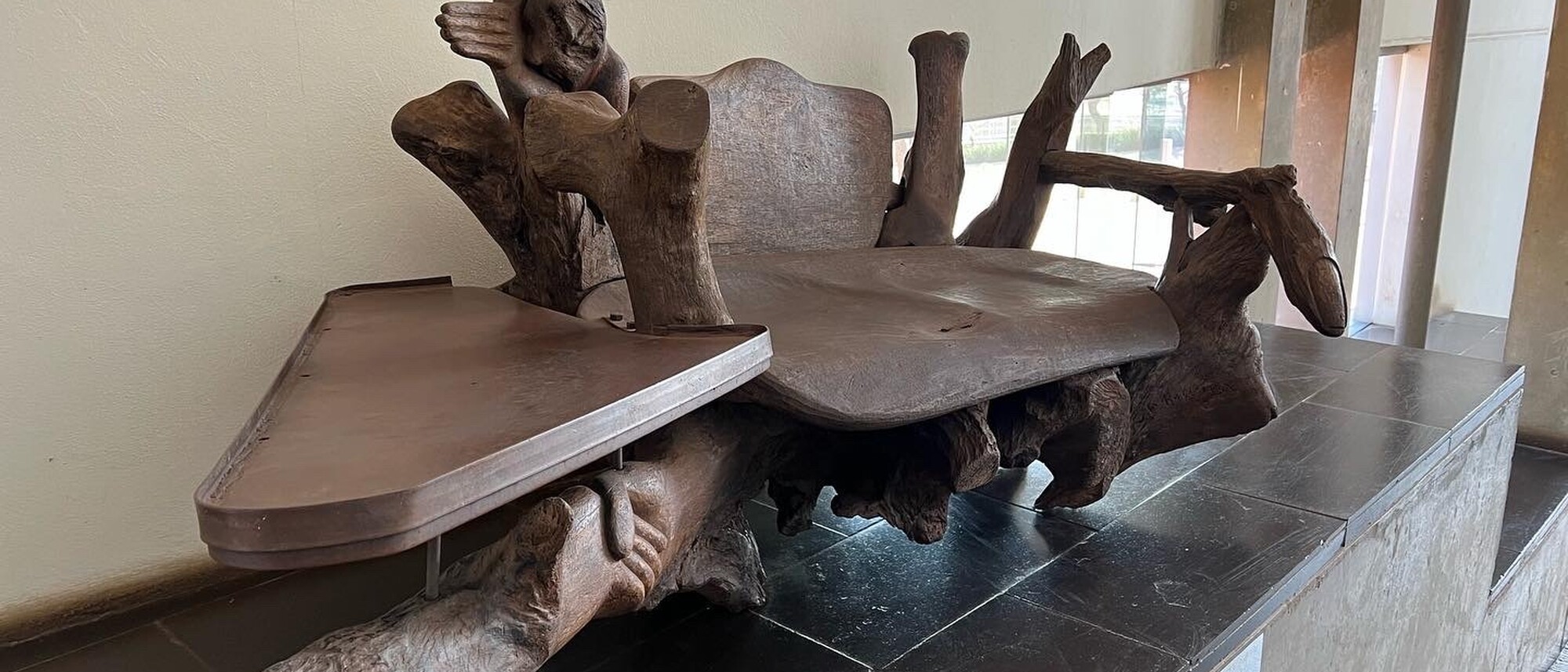
Image of the bench before conservation treatment.
The wood had become weak, dull and had lost its original and lustrous appearance, the artwork had also developed mould underneath. The objective of this project was to conserve and preserve the bench, through wood reviving, monitoring, sanding, oiling, and polishing.
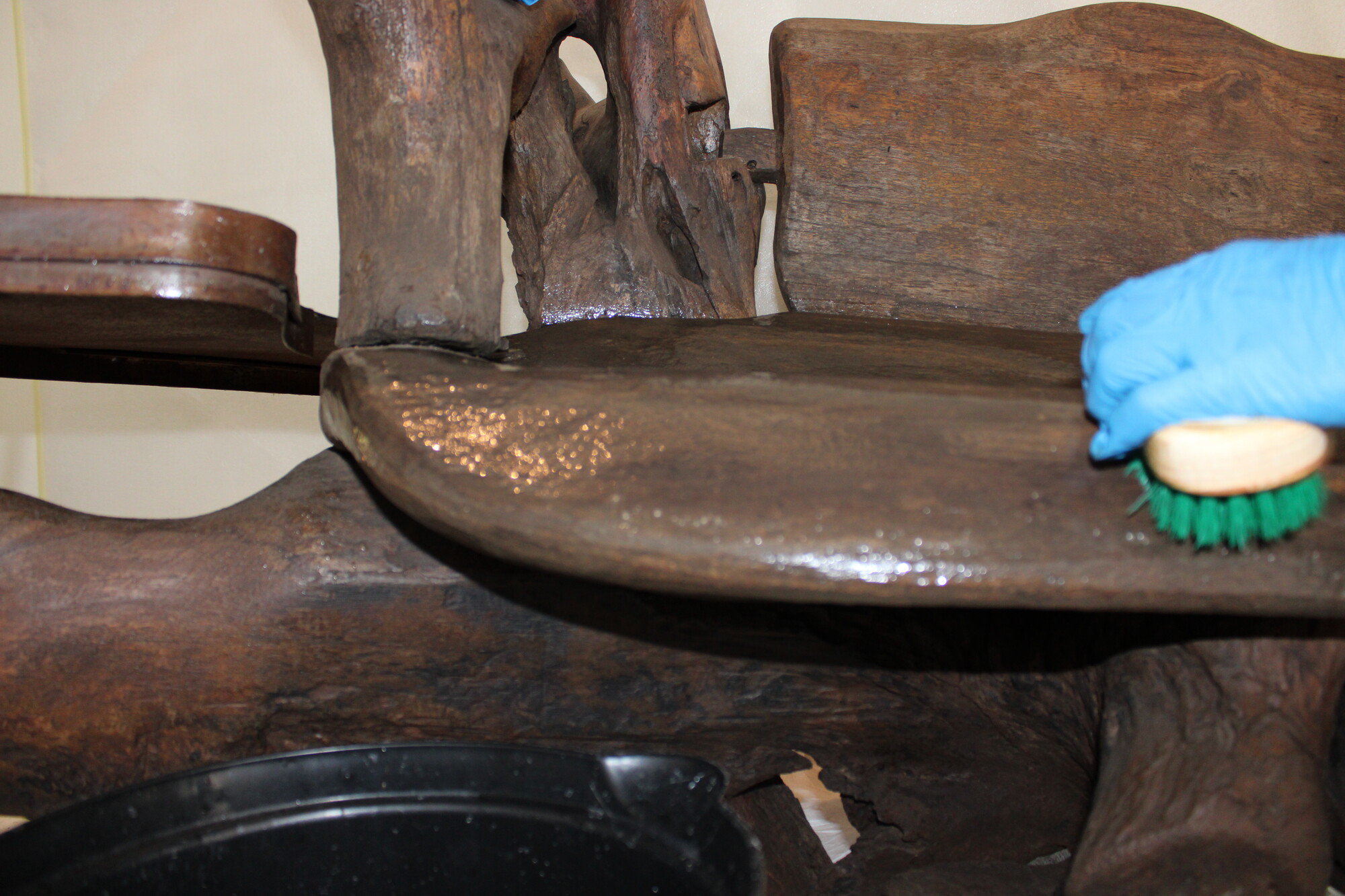
Conservation treatment of the bench, application of wood reviver using a brush.
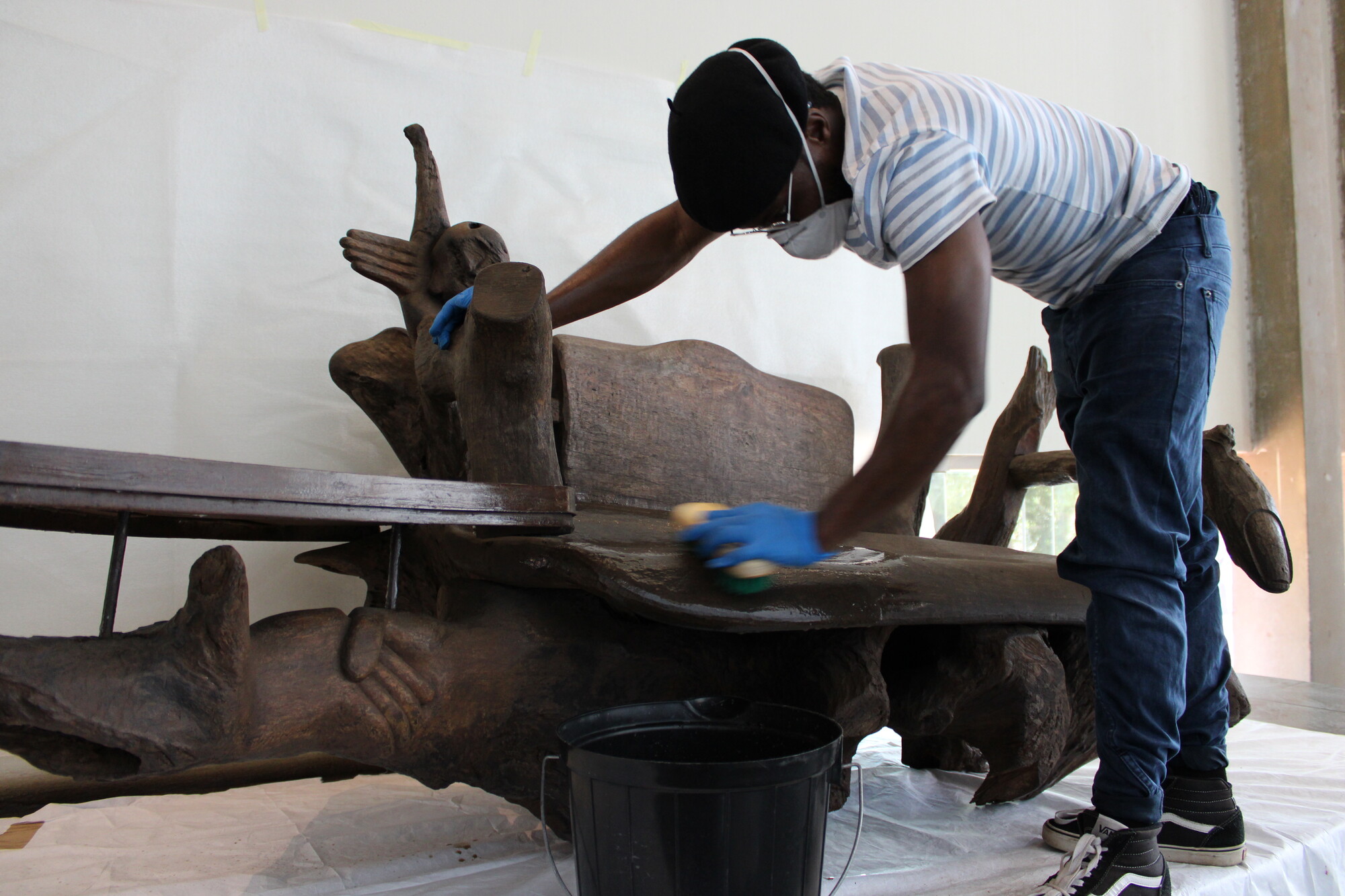
Image of CCAC intern Buntu Makhedama working on the conservation treatment of the bench.
Installation of the braille display box
The braille display box was designed, crafted and installed on the metal tray part of the bench by Ragimana during the second week of the conservation treatment. The box is made from wood, its edges are lined with aluminum, and a leather cushion on the inside supports the braille documents. At the top is a museum glass cover that can slide to reveal and give access to the braille documents.
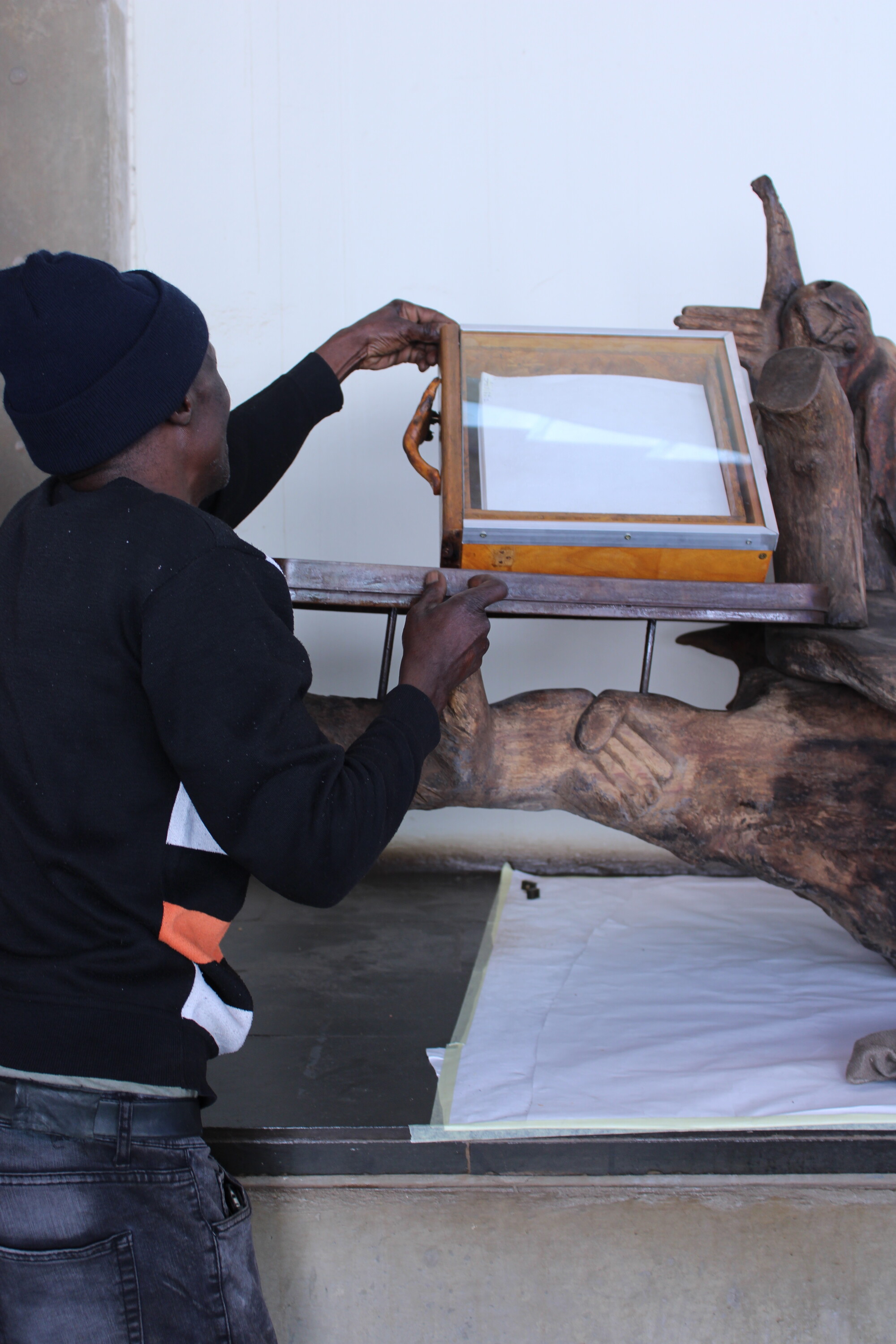
Image showing Azwifarwi Ragimana installing the braille display box.
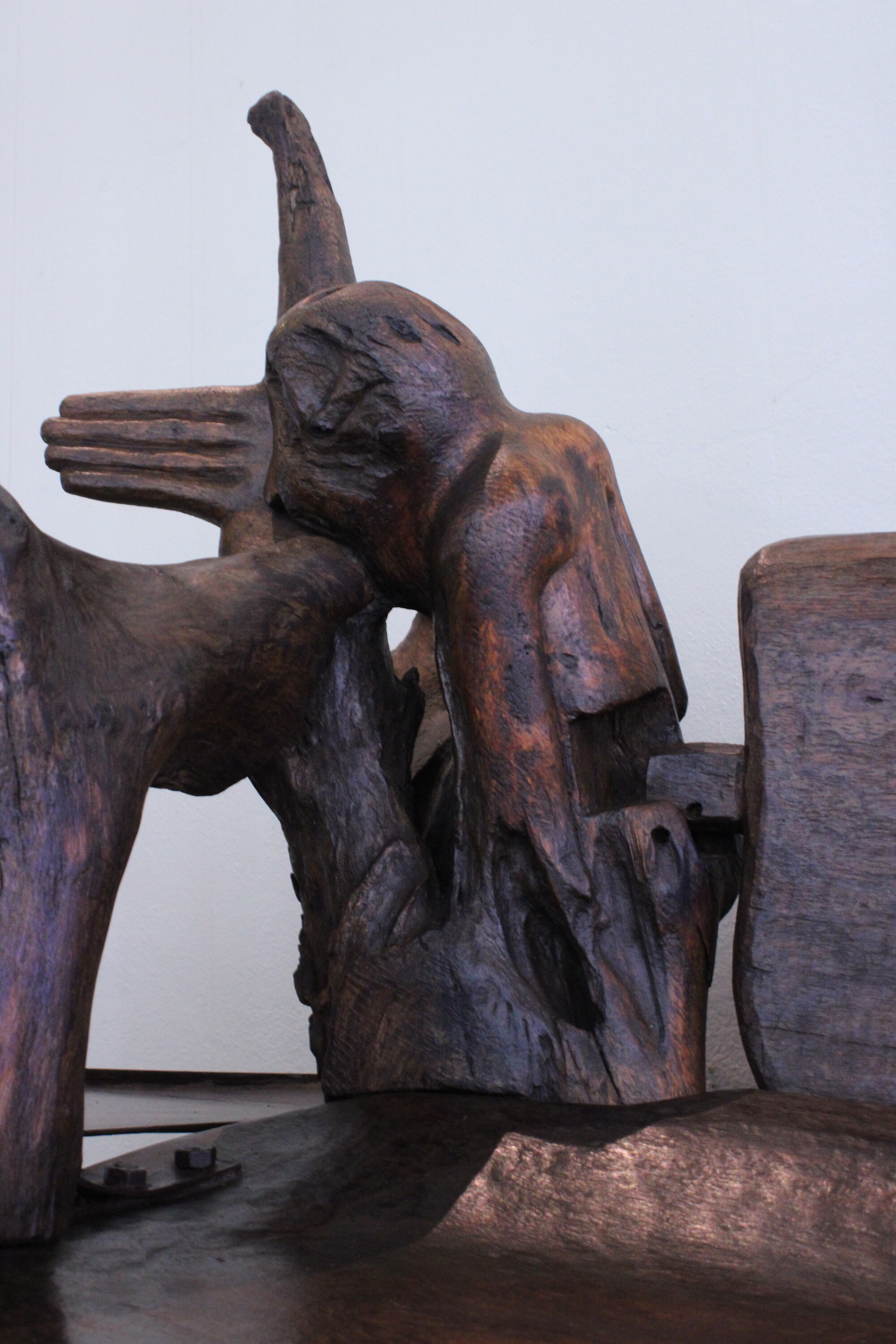
Close up image of the bench after the application of wood penetrating liquid wax.
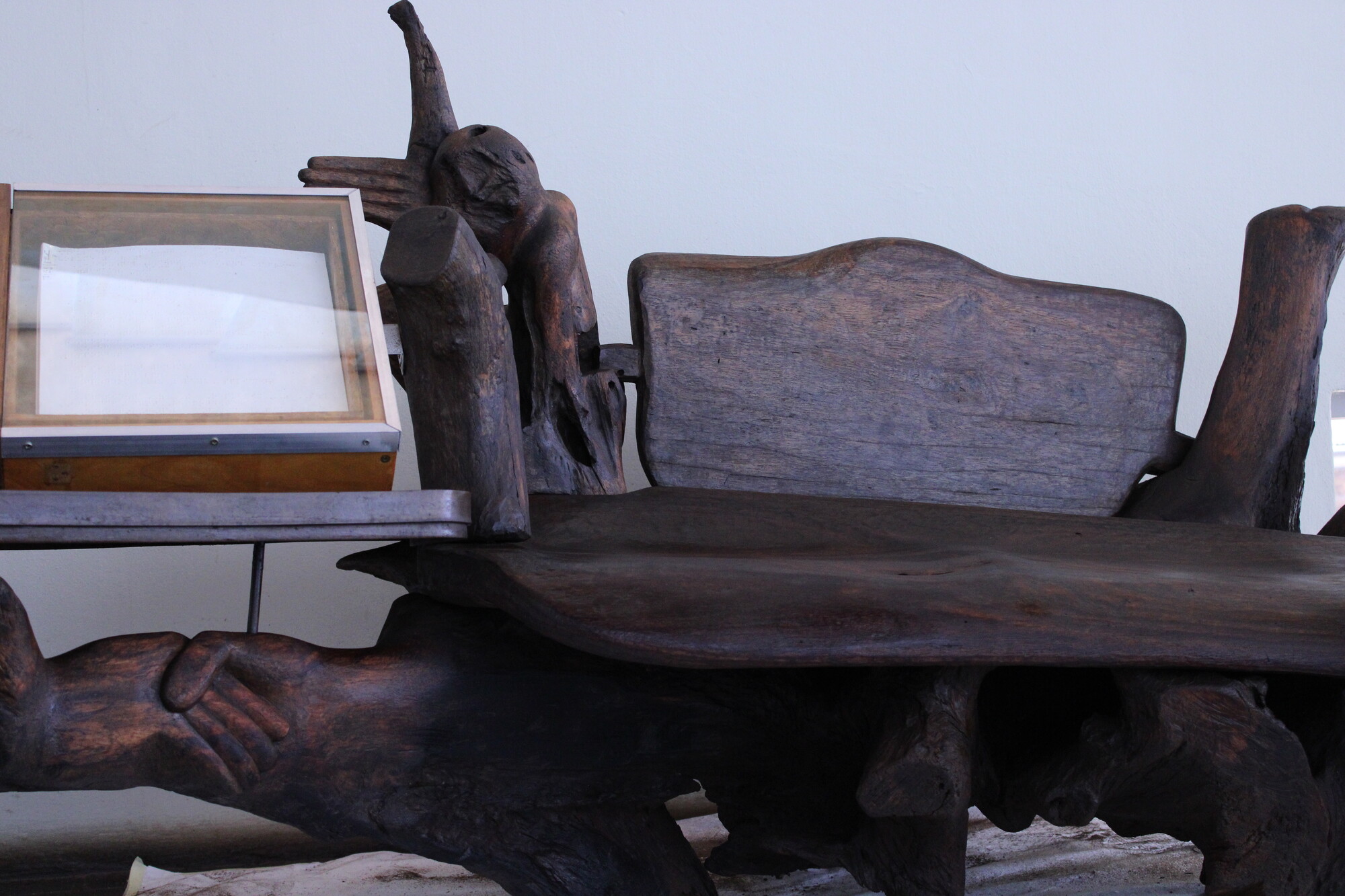
Yacoob's Bench after the installation of the braille display box and application of wood penetrating liquid wax.
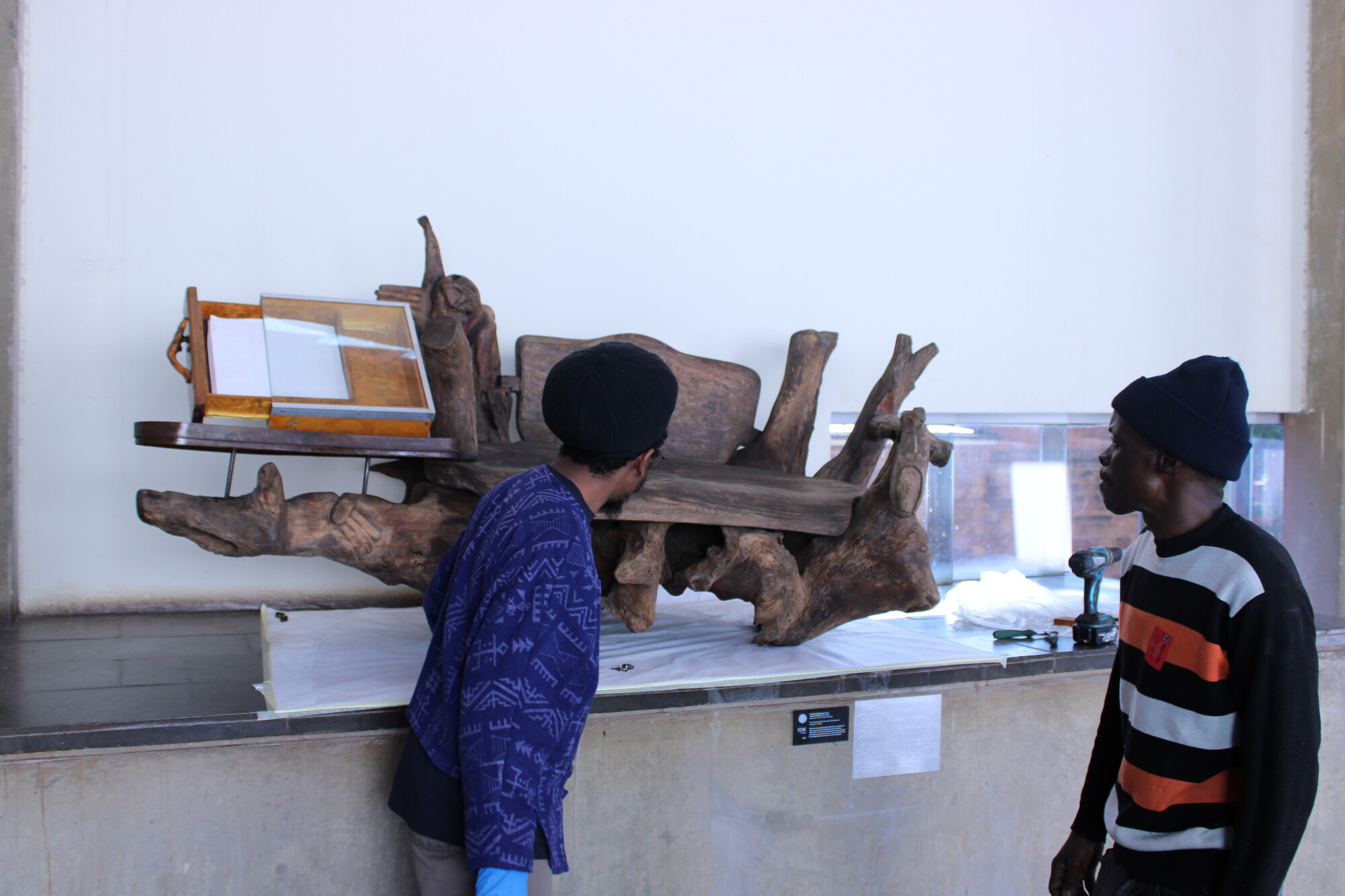
CCAC curator, Bahlakoana Lesemane and Azwifarwi Ragimana during the installation of the display box.
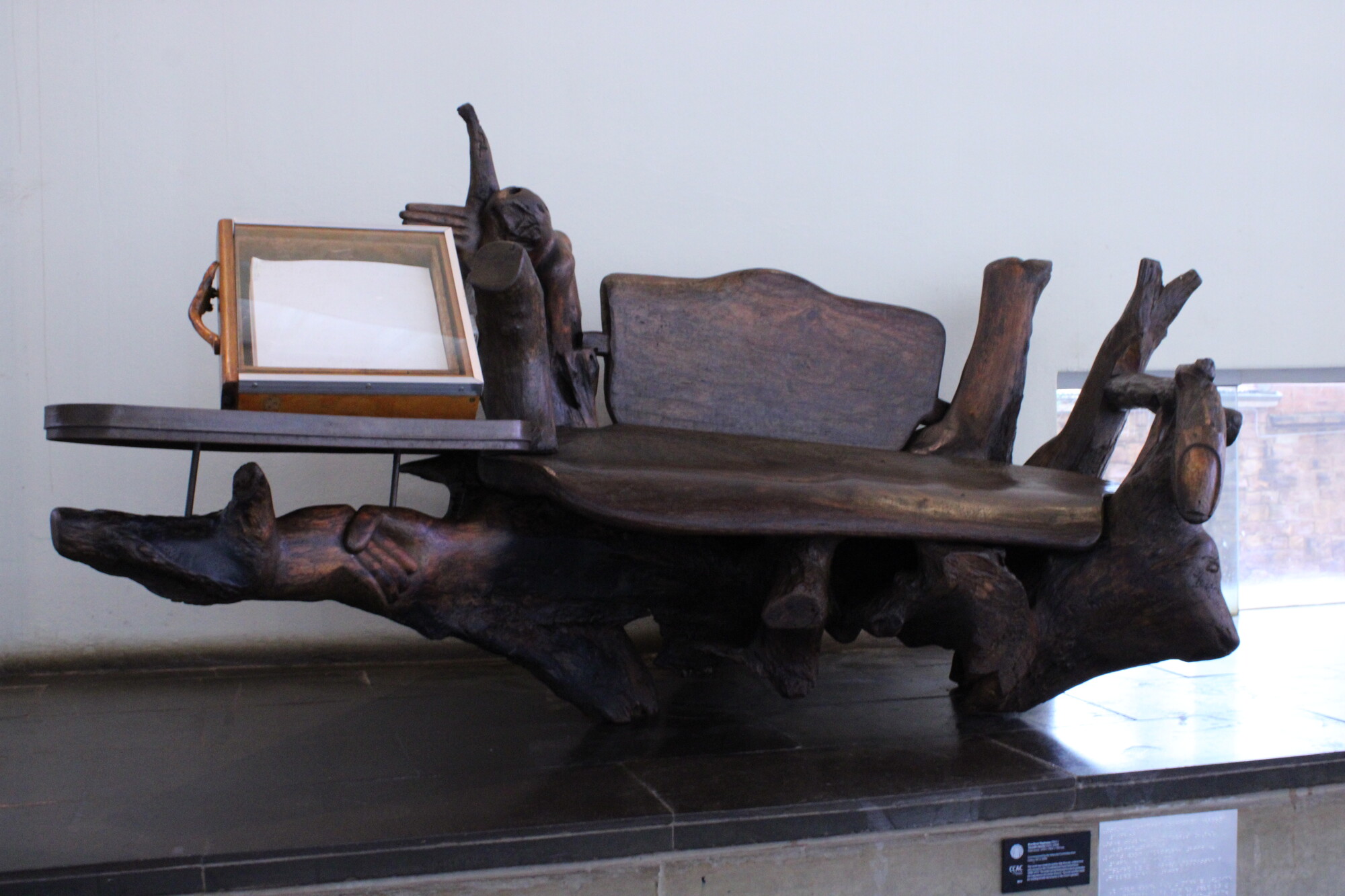
Image of the bench after polishing and at completion of the project. The artwork is currently displayed in the public gallery.